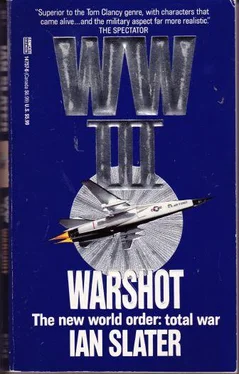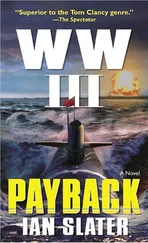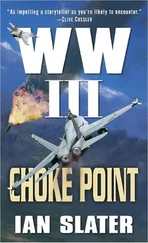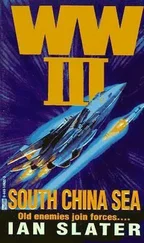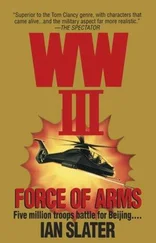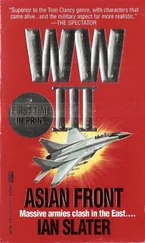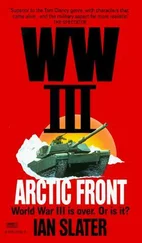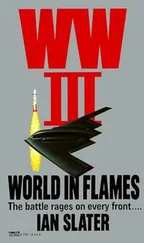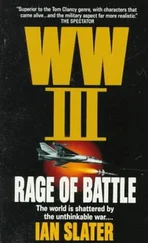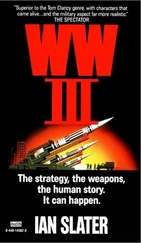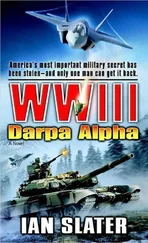“Where you going to hit them, General?” asked David Brentwood.
Jesus! thought Stimson. He’s being clobbered left, right, and center, and he’s talking about going on the attack?
“Nizhneangarsk,” Freeman said, then turned abruptly to the map, knuckle rapping the northern end of the four-hundred-mile lake. “The railhead on the BAM — Baikal to Amur mainline. We cut that — we cut the bulk of their supplies for their army of the north and for Yesov’s left hook farther south across the lake. That is part one of three, gentlemen. Any one of the three fails and we are in the manure up to our neck.” Freeman saw the frown on young Stimson’s face. “You ill, Lieutenant?”
“Ah, no, sir. I’m fine.”
“You look ill. Come on, spit it out, son.”
“Well, sir, ah…. “ Stimson was glancing nervously at the map, estimating that Nizhneangarsk was at least fourteen hundred miles northwest of Khabarovsk, and wondering why in heck no one else had seen the problem. “Sir,” he began, “I know flying conditions aren’t much good right now.”
“Aren’t much good?” said Norton. “They’re appalling.”
“Yes,” agreed Stimson, “but I was wondering, sir— well, why don’t we just bomb the railway? Wouldn’t that be much—” He stopped.
None of the others exchanged knowing glances or in any way tried to make him feel embarrassed. The lieutenant was young, and all young men, even the brightest from West Point, had to learn. Freeman took out his George C. Scott reading glasses and opened a red-diagonal-striped green file, showing the lieutenant the ARPs — area reconnaissance photos — taken by F-4G Phantoms and a few Stealth F-117As, the latter having gone in bravely despite the low impulse radar that had undone the defensive blocking action of their radar-resilient angular technology. Two of the Stealths and Phantoms had paid for it, though, and had gone down in the enfilade of heavy radar-guided AA fire.
“Son,” began Freeman, “let me tell you something the public don’t know, something our fliers learned in Vietnam, had to relearn in Iraq, and what their granddaddies knew when they were fighting the Luftwaffe. At any time — I stress at any time — rail lines, especially railway bridges, where the enemy can sink pontoons right next to the busted-up bridge a couple of inches under the water to fool reconnaissance and run the box cars across at night, are notoriously difficult to knock out.”
“But with Smart bombs—” began Stimson.
Freeman nodded impatiently, tapping the stills taken from the black-and-white video shots through the thicket of AA fire around the Nizhneangarsk rail head. “Problem is, son — and here we’re ignoring the flak and the fact they’ve got ‘smart’ AA defenses up there — problem is the damn snow.” He showed the lieutenant the pertinent reconnaissance photos — the rail lines and black ties scattered about like broken sticks in the snow. The next photo, time-marked twenty-four hours later, showed the same photo view, the rails back together in working order, the next photo showing the rails scattered again. In the fourth and last photo the rails and ties were all in place once more.
“Same area,” Freeman assured him. “The thing is, Lieutenant, ground sensors we air dropped outside the immediate area of the station registered movement at the rail head within an hour of our Stealths’ air attack. Heavy movement.”
“Tanks moving up?” proffered Stimson.
Freeman slipped his glasses off. “No. Our analysts are sure of that — it’d be a different overpressure, weight of the vehicles, if it had been tanks. No, it was rolling stock, all right, moving through the area we’d just plastered — half an hour after we’d bombed it and lost four aircraft into the bargain. Those broken tracks and ties you see are fake. Extruded plastic, we thought. Point is, they were just shiftin’ them around, son. Meanwhile the snow kept covering the real line two, three hundred yards away. Our bombs were just blowing up snow. So we sent in Smart bombs — to lock in on the real, snow-covered lines. Then we found we’d been wrong. They weren’t plastic lines they were using to fool our recon cameras, they were genuine rail lines, spares just moved around after each attack to make it look as if we’d hit the main line. No, son, it’s the same old story. Had to do it with Charlie in ‘Nam — had to do it with that son of a bitch Insane in Iraq. You have to go in on the ground. We’ll use the Airborne. It’s the only way.”
“Where do we fit in, General?” asked Aussie Lewis.
Freeman gave the four SAS/D men an enigmatic smile. “Well, I thought after that sub base you knocked out, you boys’d be bored up there. Had enough of that lake, haven’t you?”
Before they could answer, Freeman moved closer to the map and, using his glasses as a pointer, tapped the northern sector — not of the lake, but of the southwest corner of the Amur hump, on the Siberian-Chinese border. “We’re in this war, gentlemen, because the Chinese said we broke the cease-fire. Right here.” He was tapping A-7. “Well, whether we did or not, we’ve got to get our boys out of there. We’ve tried sending in choppers — they’ve been blown to bits.” He turned to David Brentwood. “What we need is a small, well-equipped commando force, flying in NOE to go in, secure a chopper LZ on the top of that damn mountain before the ChiComs overrun it. Now, our boys weren’t supposed to be in that area anyway — at least not that close to the border — and we’ve had no communication from them. But we can sort out blame later. Most of all, I want to get as many of them out as I can. You game for it. Lewis?”
NOE, nap of the earth — flying in which the choppers were often no more than twenty feet above the treeline, following the land’s contours by radar alone — didn’t particularly worry Lewis, but Choir Williams, he knew, hated it. “Well, General — Choir’s your boy for NOE. Gives him a high, it does.”
“Good,” said Freeman, grabbing his coat. “I’ll leave you with Norton to figure out the details.” He paused. “As fast as you can, boys. Meanwhile, I promise you I’m gonna hit those bastards of Yesov’s up at Nizhneangarsk. If I can stop the son of a bitch’s offensive from getting east of the lake, then I can wheel what’s left of Three Corps south to reinforce our boys ranged against the ChiComs. Bring Cheng to a standstill. And if your brother does his bit, Brentwood, we might just be able to launch a counterattack. Defeat into victory, eh?” With that, a question still on David Brentwood’s lips, Freeman was gone.
“Over here, gentlemen,” Norton informed them. “We’ve already got the choppers’ fuel and sundries allocated for you. Now — weapons.” He looked at David Brentwood, who everyone instinctively knew would lead the raid on the mountain.
“Excuse me, sir, but what’s all this about my brother? Robert or Ray? I don’t—”
“Robert. The submariner. SEAL man, too, right?”
“Robert?”
“Yes.” Norton’s tone informed David that he would be told no more. “Sorry,” said Norton, “but it’s on a need-to-know basis. And you don’t need to know. All I can tell you is that he’s step number three.”
“A Heck 7.6-millimeter barrel for me,” said Lewis without further ado, referring to the Heckler and Koch machine gun. “Run short of ammo, we can strip the Siberians.”
“You, Brentwood,” said Norton. “The same?” And immediately David Brentwood was drawn into the urgent preparations.
* * *
A SEAL team for the third part of Freeman’s plan had been needed so quickly that there was no time to bring them from their CONUS — continental United States— NAVSPECWARGRU — Navy Special Warfare Group — at either Coronado, California, or Little Creek, Virginia. Instead, Freeman had requested the nearest SEAL contingent, Team Nine from Pearl Harbor, and had personally requested submariner captain Robert Brentwood of the Sea Wolf-Hunter/Killer USS Reagan to join the team as leader.
Читать дальше
